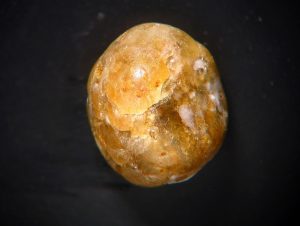Bahianite
Bahianite was discovered in 1974 in Bahia State, Brazil. It really is a real gem that is rare really uncommon mineral in so it is an aluminum antimony mixed oxide with a Moh’s hardness of 9. It is quite rare in facet grade crystals and also then it’s translucent and usually moderately to heavily included.
Truly the only present source of Bahianite may be the kind locality; the region around Pico das Almas River, about eight km southeast of the village of Paramirim das Crioulas, Érico Cardoso (old Água Quente), Bahia, Northeast Region, Brazil.
| Chemical Formula: | Al5Sb3O14(OH)2 |
| Aluminum Antimony Oxide Hydroxide | |
| Molecular Weight: | 758.16 gm |
| Composition: | Aluminum | 17.79 % | Al | 33.62 % | Al2O3 |
| Antimony | 48.18 % | Sb | 64.00 % | Sb2O5 | |
| Hydrogen | 0.27 % | H | 2.38 % | H2O | |
| Oxygen | 33.76 % | O | |||
| 100.00 % | 100.00 % | = TOTAL OXIDE |
| Crystallography: | Monoclinic – Prismatic |
| Crystal Habit: | As water-worn, bean-shaped pebbles, to 10 cm, with polycrystalline or radial-fibrous structure; also as curved and striated crystals, diamond-shaped or rectangular, lining pockets in the pebbles. |
| Twinning: | As pseudohexagonal multiple contact twins, chrysoberyl like. |
| Cleavage: | Perfect on {100} |
| Fracture: | Irregular/Uneven |
| Tenacity: | Brittle |
| Moh’s Hardness: | 9.0; Vickers: VHN100=1605 kg/mm2 |
| Density: | 4.89 – 5.46 (g/cm3) |
| Luminescence: | None |
| Radioactivity: | Not Radioactive |
| Color: | Colorless, Cream White, Light Brown, Violet |
| Transparency: | Transparent, Translucent, Opaque |
| Luster: | Adamantine |
| Refractive Index: | 1.810 – 1.920 Biaxial ( – ) |
| Birefringence: | 0.110 |
| Dispersion: | r > v |
| Pleochroism: |
Weak |


